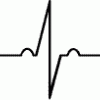phsophatidylcholine even, or some obscure chiese stuff, horny goat weed or what have you. huperzine and galantamine have interesting properties
Effect of galantamine on the human alpha7 neuronal nicotinic acetylcholine receptor, the Torpedo nicotinic acetylcholine receptor and spontaneous cholinergic synaptic activity.
Texidó L1, Ros E, Martín-Satué M, López S, Aleu J, Marsal J, Solsona C. (2005)
1. Various types of anticholinesterasic agents have been used to improve the daily activities of Alzheimer's disease patients. It was recently demonstrated that Galantamine, described as a molecule with anticholinesterasic properties, is also an allosteric enhancer of human alpha4beta2 neuronal nicotinic receptor activity. We explored its effect on the human alpha7 neuronal nicotinic acetylcholine receptor (nAChR) expressed in Xenopus oocytes. 2. Galantamine, at a concentration of 0.1 microM, increased the amplitude of acetylcholine (ACh)-induced ion currents in the human alpha7 nAChR expressed in Xenopus oocytes, but caused inhibition at higher concentrations. The maximum effect of galantamine, an increase of 22% in the amplitude of ACh-induced currents, was observed at a concentration of 250 microM Ach. 3. The same enhancing effect was obtained in oocytes transplanted with Torpedo nicotinic acetylcholine receptor (AChR) isolated from the electric organ, but in this case the optimal concentration of galantamine was 1 microM. In this case, the maximum effect of galantamine, an increase of 35% in the amplitude of ACh-induced currents, occurred at a concentration of 50 microM ACh. 4. Galantamine affects not only the activity of post-synaptic receptors but also the activity of nerve terminals. At a concentration of 1 microM, quantal spontaneous events, recorded in a cholinergic synapse, increased their amplitude, an effect which was independent of the anticholinesterasic activity associated with this compound. The anticholinesterasic effect was recorded in preparations treated with a galantamine concentration of 10 microM. 5. In conclusion, our results show that galantamine enhances human alpha7 neuronal nicotinic ACh receptor activity. It also enhances muscular AChRs and the size of spontaneous cholinergic synaptic events. However, only a very narrow range of galantamine concentrations can be used for enhancing effects.
Huperzine A, a nootropic alkaloid, inhibits N-methyl-D-aspartate-induced current in rat dissociated hippocampal neurons.
Zhang JM1, Hu GY. (2001)
Huperzine A, a nootropic alkaloid isolated from a Chinese herb, has been proposed as one of the most promising agents to treat Alzheimer's disease. Recently, the agent was found to inhibit the N-methyl-D-aspartate (NMDA) receptors in rat cerebral cortex in addition to causing an inhibitory effect on acetylcholinesterase. In the present study, the mechanisms underlying NMDA receptor inhibition were investigated using whole-cell voltage-clamp recording in CA1 pyramidal neurons acutely dissociated from rat hippocampus. Huperzine A reversibly inhibited the NMDA-induced current (IC(50)=126 microM, Hill coefficient=0.92), whereas it had no effect on the current induced by alpha-amino-3-hydroxy-5-methyl-4-isoxazole propionate or kainate. The effect was non-competitive, and showed neither 'voltage-dependency', nor 'use-dependency'. The IC(50) values of huperzine A were neither altered by changing the concentrations of glycine (2-0.2 microM) and pH (7.4-6.7) in the external solution, nor by addition of Zn(2+) (5 microM) and dithiothreitol (5 mM) to the external solution. However, addition of spermine (200 microM) to the external solution caused a parallel shift to the right of the huperzine A concentration-response curve. From these we suggest that huperzine A acts as a non-competitive antagonist of the NMDA receptors, via a competitive interaction with one of the polyamine binding sites. The potential relevance of NMDA receptor antagonist activity of huperzine A to the treatment of Alzheimer's disease is discussed.



















































